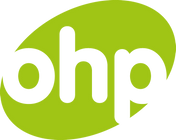Instructions
What You Need:
- OHP K+DCAN OBD2 USB tool cable interface.
- Installer CD included in the package.
- Windows XP/7/10 laptop computer.
Supported Vehicle Models:
K-LINE models:
1 Series E87
3 Series E46 E83 E90
5 Series E39 E60 E61
6 Series E63 E64
7 Series E38 E65 E66
X Series F25
X Series E53
Z Series E85 E52
D-CAN models:
E60, E61 after 3 / 2007
E83 after 9 / 2006
E81, E87 after 3 / 2007 E90, E91, E92, E93 after 3 / 2007
E53
E70 (New X5)
R56 (New Mini)
Installation
Step 1 - Install Device Drivers
- Plug the K+DCAN OBD2 USB device into the USB port of your laptop computer and let Windows automatically configure the device drivers. Make sure that you are connected to the Internet.
- If Windows did not automatically detect the USB device, you need to manually install the drivers. Download and install the latest version of FTDI drivers for Windows here: https://ftdichip.com/drivers/vcp-drivers/
- Select the latest Windows release. Choose between 64-bit or 32-bit, depending on the version of your Windows operating system. Most computers running the latest Windows 10 versions are 64-bit.
Step 2 - Configure COM Port on Device Manager
Configure your laptop’s COM port. This can only be done while the device is plugged into the USB port of your computer.
- Open the Device Manager.
- Expand the Ports (COM & LPT).
- Right-click on USB Serial Port (COM).
- Go to Properties, then Port Settings, then Advanced.
- You will find the COM Port number, ex: Port=Com1. You can let it stay as is or you can change it to your preferred COM number between COM1 to COM30.
- Change the "Latency Timer (msec)" to 1.
Step 3 - Run CD Installer
- Run the installer CD on your laptop computer.
- For Windows 10 and 7 users (and 8, 8.1 as well) - right-click on the Installer file to “run as admin” + “compatibility mode”.
- Install the BMW Standard Tools to your Local Disk (C:).
- The BMW Standard Tools will install the following BMW software:
EDIABAS:
- Tool32
- CANdriver
WINKFP:
- CoAPI
NFS:
- KMM SRV
INPA
NCS Expert
Step 3 - Check COM Port number on EDIABAS
It is vital to match your computer’s COM Port number with EDIABAS so that your computer can communicate with the vehicle’s ECU. EDIABAS is the main communication layer to most BMW diagnostic, coding, and flashing software.
- Open EDIABAS folder. Navigate to C:\EDIABAS\Bin
- Locate obd.ini. Open using a text editor (such as Notepad).
- Check the value in the second row, ex: Port=Com1. Be sure that the COM Port number matches with your computer’s COM Port number on Device Manager. Click Save and Exit.
Step 4 - Test COM Port
You need to check if the COM Port has been correctly configured.
- Unplug the USB device and plug it back to the same USB port on your computer.
- Go to Device Manager.
- Expand the Ports (COM & LPT). See if "USB Serial Port (COM())" is available. If it is, this means that the COM port has been configured correctly and the device drivers were properly installed.
Step 5 - Connect to your Vehicle
- Plug the OHP K+DCAN OBD2 interface into your vehicle OBD2 port and connect the USB device to your computer.
- Run the INPA software on your computer. Check if there are 2 SOLID Black dots next to the "Battery" and "Ignition" headings. This means that the INPA software had successfully detected your vehicle.
- You can now use the other BMW software included in the BMW Standard Tools.
*Special thanks to ResearchDesignLab and MKAutoTech for the video guide. Subscribe to their channels for more helpful videos.
